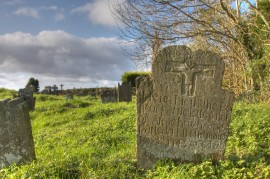We highly recommend a great online service known as Geni to create your tree. Geni was founded by former PayPal COO David Sacks (@davidsacks) in 2006, and aims to create a “family tree of the world”. Geni is great in the fact that it facilities a collaborative approach to genealogy. There are already 90 million profiles recorded on Geni, so chances are somebody may have already recorded branches of your tree. With this collaborative approach each researcher can add their own pieces to the jigsaw, while verifying those added by others.
Start with what you already know
A great place to start your tree is to record what you already know. It’s essential to get the basic structure of your tree in place first before attempting to record any ancestral nodes. With Geni this process very simple. You could start by adding your parents, then siblings, then aunts and uncles, their children, then your grandparents – consult with older family members and get them involved. Documenting as much as possible at this stage is very important. Now try adding great-uncles and great-aunts, great-grandparents, second great-grandparents, and so on.

Genealogy in Ireland is extremely popular, especially with such a vast and proud diaspora of around 80 million people throughout the world. Online genealogical resources are Ireland are few but encouragingly are slowly becoming digitised and represented online for easy access by researchers worldwide.
1901 and 1911 censuses of Ireland
The most important and comprehensive Irish resources online are the 1901 and 1911 censuses of Ireland. The project first appeared online in December 2007, with all counties for both the 1901 and 1911 censuses available online now for free viewing. All information, particularly age, should be taken cautiously as under-estimation regularly occurred, especially among women.
Visit local graveyards with a camera

Genealogical information without dates isn’t particularly useful. Visit local graveyards and take pictures of family headstones to record dates-of-death for future reference. Many headstones will include the age of the deceased when they died, so it’s possible to work out an approximate date-of-birth for the individual. Date approximations within plus or minus five years are better than no dates at all.
Griffith’s Valuation of Ireland
Griffith’s Valuation was the first property survey of Ireland conducted between 1848 and 1864. The survey determined the value of all privately held lands and buildings in Ireland to calculate the rate at which each property could be rented year-on-year. For many, Griffith’s Valuation is an invaluable resource as most censuses prior to 1901 were destroyed.
FamilySearch.org
FamilySearch is a free genealogy service provided by The Church of Jesus Christ of Latter-day Saints, and is the largest genealogy organisation in the world. FamilySearch has an enormous collection of records and genealogy data, including Ireland Births and Baptisms from 1620 to 1881, Ireland Deaths from 1864 to 1870, Ireland Marriages from 1619 to 1898, and Ireland Civil Registration Indexes from 1845 to 1958, totalling almost 27 million specific Irish records.
Armed with these few mentioned resources we hope you have some happy researching this holiday season. Let us know of any other notable resources in the comments.